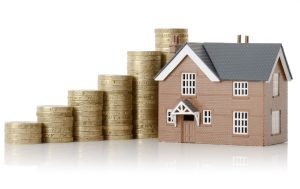
Calculate Reverse Mortgage: Expert Tips with Reverse Mortgage Calculators
Reverse mortgages provide an opportunity for homeowners, especially seniors, to convert their home equity into cash without needing to sell their home or make monthly mortgage payments. Understanding how to calculate reverse mortgage amounts and knowing the different products available can be complex. This guide will explain how reverse mortgages are calculated and explore various reverse mortgage products, with insights into using a reverse mortgage calculator.
Verify my mortgage eligibility (Jan 5th, 2026)Understanding Reverse Mortgages
A reverse mortgage allows homeowners aged 62 and older to borrow against their home equity. Unlike traditional mortgages, where the borrower makes monthly payments, a reverse mortgage provides payments to the homeowner. These payments can supplement retirement income, cover living expenses, or pay for healthcare. The loan is repaid when the homeowner sells the home, moves out permanently, or passes away.
Verify my Reverse Mortgage Co-op eligibility!
Key Factors in Calculating Reverse Mortgages

- Home Value: The appraised value of your home is crucial in determining how much you can borrow through a reverse mortgage. Higher home values generally allow for greater access to equity.
- Age of the Youngest Borrower: The age of the youngest borrower is significant because older borrowers are typically eligible for larger loan amounts. This is due to the expectation of a shorter loan duration.
- Current Interest Rates: Interest rates play a vital role in the reverse mortgage calculation. Lower interest rates increase the amount you can borrow, while higher rates decrease it.
- Existing Mortgage Balance: Any existing mortgage on your home must be paid off with the proceeds from the reverse mortgage. This will affect the net amount you receive.
- Loan Type and Product: The type of reverse mortgage product selected also impacts the calculation. Different products offer varying terms, fees, and benefits.
Verify my Reverse Mortgage Co-op eligibility!
Types of Reverse Mortgage Products
- Home Equity Conversion Mortgage (HECM): The most common type of reverse mortgage, HECMs are federally insured and available through HUD-approved lenders. They offer several payout options, including lump sum, line of credit, or monthly payments. HECMs are versatile and cater to a wide range of needs.
- Proprietary Reverse Mortgages: These private loans are offered by financial institutions and are not insured by the federal government. They are often used by homeowners with higher-valued properties and can provide larger loan amounts than HECMs.
- Single-Purpose Reverse Mortgages: Offered by some state and local government agencies and nonprofit organizations, these loans are designed for a specific purpose, such as home repairs or property taxes. They typically have lower costs but are less flexible in terms of fund usage.
Verify my mortgage eligibility (Jan 5th, 2026)
Calculating Your Reverse Mortgage Amount

To calculate reverse mortgage amounts accurately, using a reverse mortgage calculator is highly recommended. These calculators typically require inputs such as:
- Home value
- Age of the youngest borrower
- Current interest rates
- Existing mortgage balance
Verify my Reverse Mortgage Co-op eligibility!
Reverse Mortgage Calculator Overview
Using a reverse mortgage calculator helps simplify the calculation process. These tools consider all relevant factors to provide an estimate of how much you can borrow. For a basic understanding, the principal limit (the maximum amount you can borrow) is often calculated as:
Verify my mortgage eligibility (Jan 5th, 2026)Principal Limit=Max Claim Amount×Principal Limit Factor\text{Principal Limit} = \text{Max Claim Amount} \times \text{Principal Limit Factor}Principal Limit=Max Claim Amount×Principal Limit Factor
Where:
- Max Claim Amount is the appraised home value or the FHA lending limit, whichever is less.
- Principal Limit Factor is a percentage based on the borrower’s age and current interest rates.
Additional Costs and Considerations

When calculating a reverse mortgage, be aware of associated costs such as:
- Origination fees
- Mortgage insurance premiums
- Closing costs
- Servicing fees
These costs can be included in the loan, reducing the net proceeds you receive.
Calculating a reverse mortgage involves understanding multiple factors, including home value, borrower age, interest rates, and the chosen product. Using a reverse mortgage calculator simplifies this process and helps you explore various options. At Opulence Home Equity, we are committed to helping clients navigate the complexities of reverse mortgages and making informed decisions. Contact us today to learn more about how a reverse mortgage calculator can assist you in unlocking the potential of your home equity and securing a comfortable retirement.
